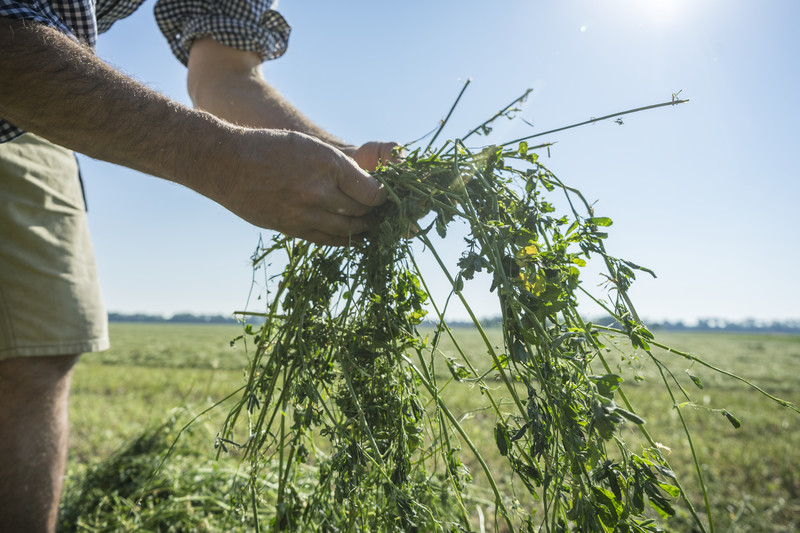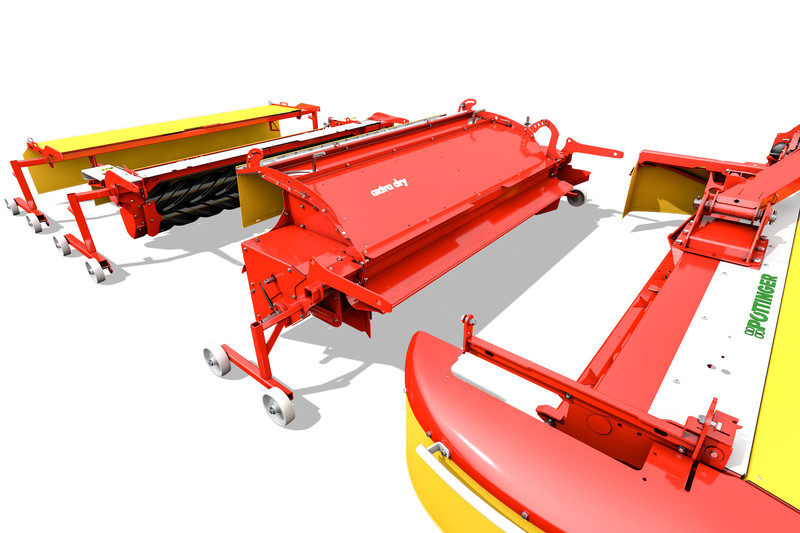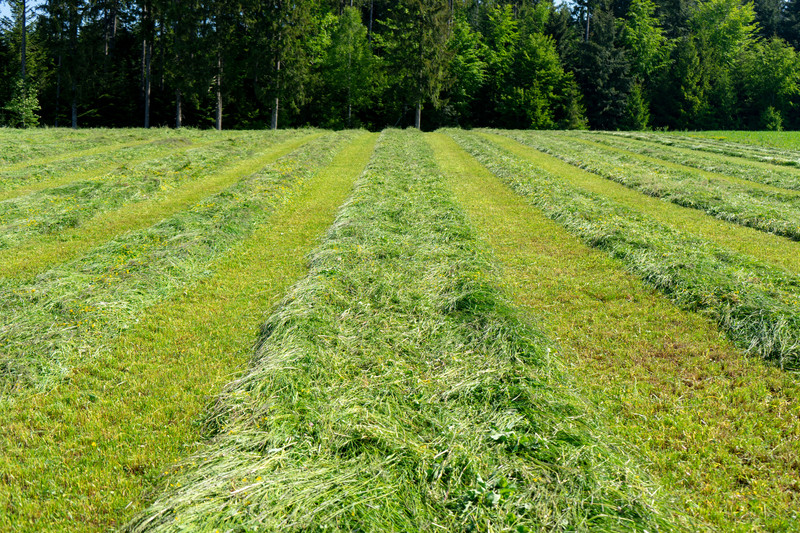Clean and tidy conditioning
×
Accelerate drying
Plants have a waxy coating to protect them from drying out. The necessary gas exchange with the ambient air is regulated only by stomata; microscopic openings in the leaves and stem. Immediately after mowing, these openings close to protect the plant. This means that during drying, water can only escape through the less permeable waxy coating.
The conditioner has the job of breaking up the waxy layer of the mown crop, which brings about two major advantages.
The mowed crop dries faster. Less nutrients are lost by reducing the time the crop is left wilting in the field.
In addition, this also facilitates the release of cell juice in the clamp. This results in faster pH value reduction. What this means is that the silage reaches a stable state more quickly.
The right conditioner for every crop
For the best working results, a conditioner must be chosen that suits the crop to be mown. For crop with high grass content, for example, the ED tine-type conditioner achieves good results. It hits the stalks in the crop. For especially leafy forage, the RC roller conditioner is recommended. This conditioner crimps the crop.

1 mower – 3 possibilities
Thanks to the optional quick-change kit, the tine conditioner or roller conditioner can be removed in a short time on many mowers.
You can switch between the tine and roller conditioner in just a few steps, or install a guard curtain.
How to quickly transform your mower
Take off the V-belt
Fit the conditioner trolley
Undo the conditioner fastenings
Remove the conditioner
Fit guard curtain / alternative conditioner

Placement strategies
Thanks to their adjustable swath doors, both conditioner systems can either spread the crop wide or forming a swath, depending on the specific requirements.
Wide placement offers the advantage that because the forage is in an airy loose blanket, the tedder can either be omitted, or drying can be shortened by 2-5 hours with a subsequent tedding process. In the case of hay, the wide placement makes a 2-day harvesting process possible by drying quickly from the start and greatly minimising the weather risk.